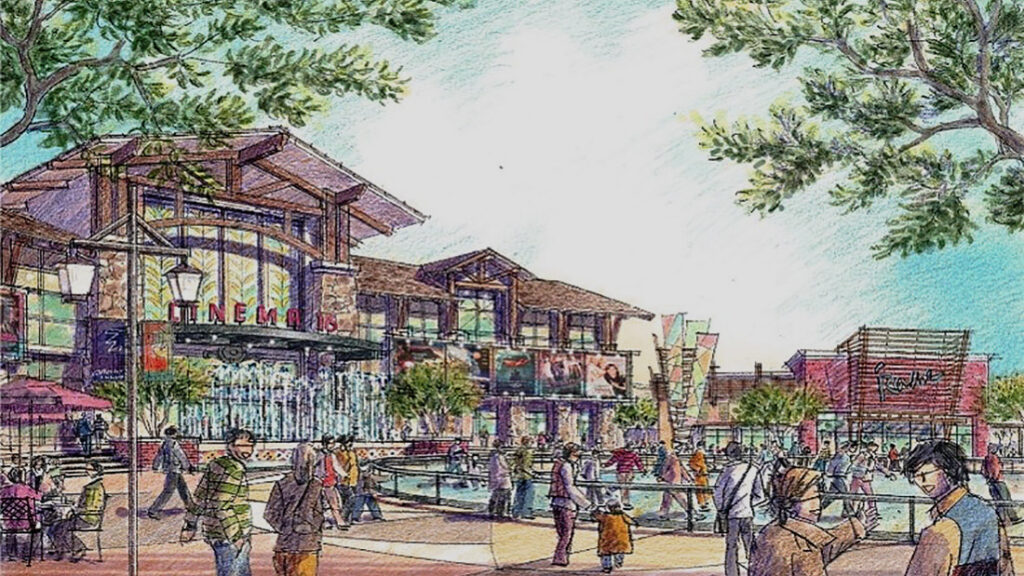Place naming is a tactic for placemaking, one of a large menu of tactics available to those involved in place-making design and/or operation.
Naming conventions, including the place and feature names and naming hierarchies, play a critical role in a project’s early strategic marketing and initial brand equity. Naming conventions are an interesting aspect of placemaking and experiential design, and experiential branding for that matter.
Naming places, and parts of places, should not be a casual thing – as much fun as it can be. All names should be placed in a place’s naming hierarchy, which then guides what role each name element will play in overall brand-building and management. This is true even for names of minor things – such elements work their way into the lasting mind memory (or place-mapping) of a place – even if subconscious.
Names should be related to the “big idea” that is behind the place or the place’s guest experience, but each name does not have to hit a bulls-eye. Each name can simply paint all or part of various aspects of the overall place-brand picture. By relating names to the Big Idea, in some way, we uphold the current and re-positioned brand equity.

Place naming nomenclature and hierarchy are as important to placemaking as spatial organization and aesthetics, due to the resonance of “place memory.”
We should recognize that the region in which a facility or place is situated, can be an overwhelming aspect of a place’s aura. This can create a trap to creative place naming. Example – any place in Colorado (USA) – in such an instance, while we should would want to avoid all the naming traps of Colorado, we must remember that part of the Colorado aura is its spirit and essence of the West.
It is this spirit that we might want to capture for a specific place, but at the same time leave the cliche of mining towns, faux cowboys, behind. The same might be argued for Dubai, where many trite Arabic, desert, and Gulf nomenclature can be evoked – the challenge again is to reach for the unique, the special, even the sublime.
There is a wonderful subtlety and indelible quality to place-memory, that can be important to naming and branding. We may know a place as The Lodge, or The Plaza, or The Met – very simply names without obvious branding. However, if the place that is conjured up by the name is quite wonderful – a simple name may carry powerful branding capacity.
A simple name such as the Green might be used (along with some back story) to conjure up a sense of community, family, friends, the environment, and the like. And such simple names may have terrific double meanings that are useful such as the environmentalism and natural qualities that a name like the Green conveys. Double meanings are wonderful.
Keeping it real, keeping it authentic in some way, are good guidelines in naming. There is little question that part of a place’s existing Brand Equity is potential experiential authenticity – it’s realness.
In naming it is useful to avoid names that sound like typical developer attempts – names that give the patina of real estate project as opposed to real place. If we’re building a town or a real place, piece by piece, the naming can and should reflect this.
At all times in name selection, we must remember how people actually use and refer to place names. People tend to shorten names when they can. But a proper full name is essential at the same time, since in using the shortened name, people are often conjuring in their mind’s eye, the full name and the destination place.
Hierarchy is of course vital in naming. All names are not the same. The hierarchy begins with the name brands and logomarks of a region and place, then proceeds through various levels to matters as detailed as festival names and promotions ideas.
Major Places, Parcels, and Projects. The major parcels, locations, and/or projects making up a place should each embody a core dimension of the positioned brand identity. An example of such dimensions are listed below. Some of these apply equally to self, as well as to our relationship to the physical world.
— Individualism
— Adventure
— Discovery
— Achievement
— Renewal
— Support
— Celebration (of self, family, friends, community, spirit)
— Place of Embarkation

